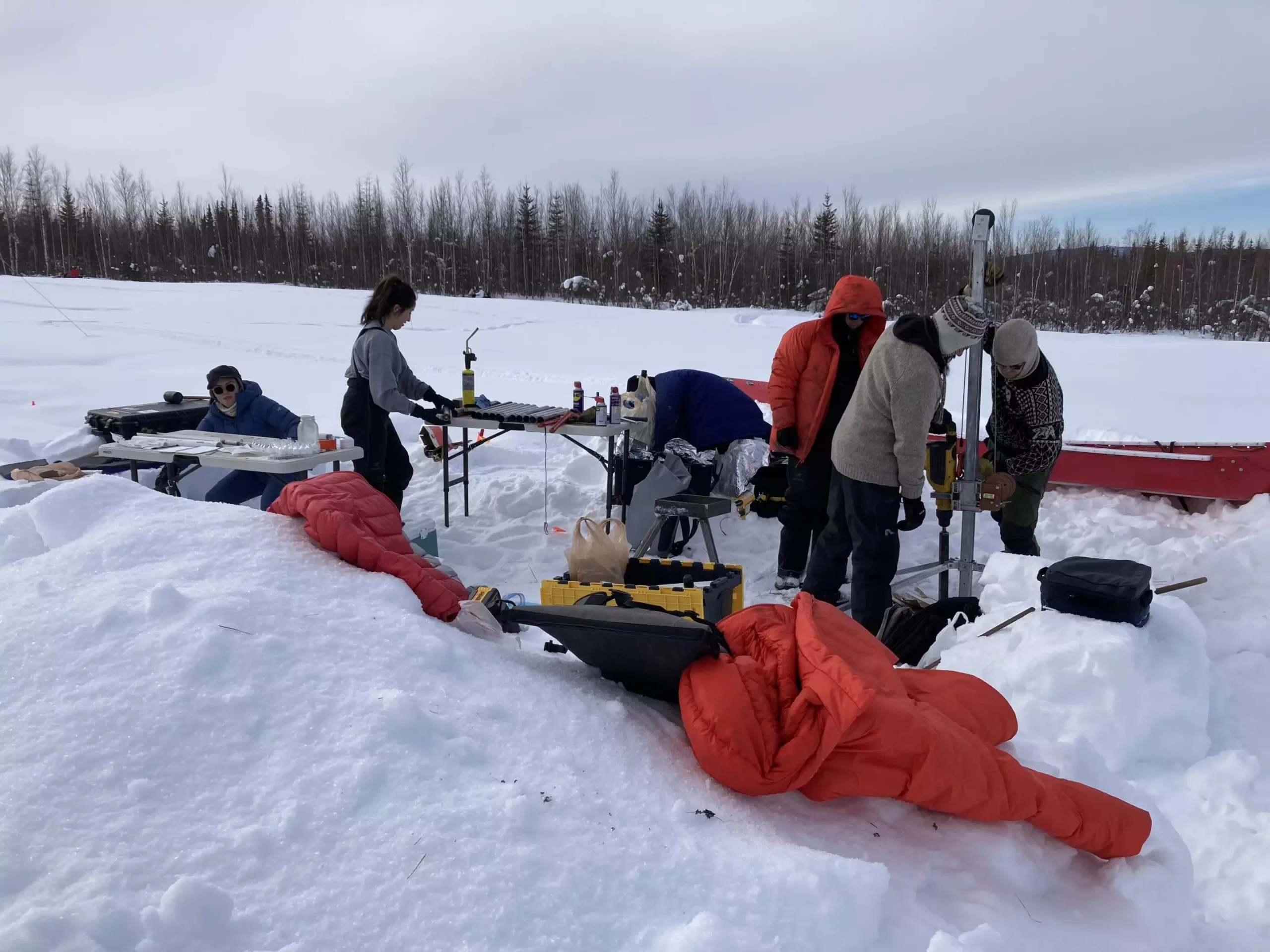The Arctic regions have long been recognized as vital areas for scientific investigation due to their sensitivity to climate change. Recently, a breakthrough study led by researcher Katey Walter Anthony from the University of Alaska Fairbanks has revealed alarming information regarding an unexpected source of methane emissions emanating from upland ecosystems. This finding challenges established scientific assumptions about methane sources in the Arctic and highlights the need for a reevaluation of current climate models.
For years, whispers of methane gas bubbling beneath the lawns and landscapes of Fairbanks went largely unnoticed, even by residents who should have had a vested interest in these developments. Katey Walter Anthony, a prominent limnologist, initially dismissed the rumors as unfounded, adhering to traditional notions that linked methane emissions primarily to wetlands and water bodies rather than drier landscapes. However, the discovery of ignitable “turf bubbles” at a local golf course prompted a deeper investigation into these occurrences. Subsequently, Anthony ventured into adjacent forested areas and unearthed significant methane emissions emerging from soil beneath birch and spruce trees—a startling revelation that underscored an urgent need for research in this unexplored domain.
With the backing of the National Science Foundation, Walter Anthony and her research team embarked on an ambitious project to survey dryland ecosystems throughout Interior and Arctic Alaska. Their results, published in July in the journal Nature Communications, painted a vivid picture of upland landscapes as significant contributors to methane release—an outcome that diverges dramatically from the prevailing scientific theories regarding methane emissions in the Arctic. The study discovered that these areas were emitting methane composed of ancient carbon, significantly older than typical emissions recorded from other terrestrial ecosystems. This finding reshapes the narrative of our understanding of methane dynamics and presents new concerns regarding the implications of permafrost thawing on a global scale.
One of the most striking revelations from the study was the unexpectedly high emissions of methane during winter months. The research highlighted a situation wherein emissions from dry upland sites surged to five times those recorded in northern wetlands, traditionally considered the primary methane sources. This underscores a serious inconsistency in previous environmental models. The reliance on the assumption that only waterlogged areas would emit methane must be critically evaluated in light of Walter Anthony’s findings.
To solidify the research, Walter Anthony and her collaborators identified 25 additional sites across various ecosystems in Alaska, examining over 1,200 locations over three years. This comprehensive approach revealed that nearly all studied sites emitted methane, marking a significant departure from previously held views that upland environments were marginal to methane dynamics.
The research ventured into intricate soil dynamics, revealing the importance of unique geological features called taliks—unfrozen soil pockets that facilitate microbial activity even during the coldest seasons. This phenomenon allows soil microbes to decompose organic matter and release methane, presenting a scenario where wintertime emissions dramatically deviate from established expectations. The team discovered that sites with Pleistocene-era Yedoma deposits, which account for a large portion of the carbon stored in permafrost soils, exhibited significantly elevated methane emissions.
Walter Anthony pointed out the crucial role that silt-rich, deeply thawed soils in taliks play in favoring methane-producing microbes, shading light on a lesser-known relationship between soil composition and greenhouse gas emissions.
The ongoing climate discourse must now confront the ramifications of these newly uncovered methane sources. Around 3% of the permafrost region is formed by Yedoma soils, yet they contain more than 25% of the carbon held within northern permafrost regions. Walter Anthony’s insights into the potential development of thermokarst mounds—land formations resulting from thawing permafrost—across the pan-Arctic indicate an emerging source of methane that could be exacerbated by future warming trends.
The research team’s conclusions advocate for an urgent recalibration of climate models, which previously underestimated the influence of upland environments in methane emissions. The trajectory of Arctic warming stands to accelerate the feedback loop of permafrost thaw, leading to increased atmospheric methane levels and reinforcing the urgency of addressing climate change comprehensively.
As the conversation around climate change evolves, the findings presented by Katey Walter Anthony and her colleagues urge the scientific community to broaden its understanding of methane emissions. The unexpected and substantial methane outputs from upland ecosystems signal that current models may significantly underestimate the potential contributions of these environments. Research into the multifaceted interactions between soil microbiology, geology, and atmospheric dynamics is imperative for crafting effective climate strategies moving forward. Without such advances in understanding, countering the repercussions of climate change may prove to be a herculean challenge for decades to come.


Leave a Reply